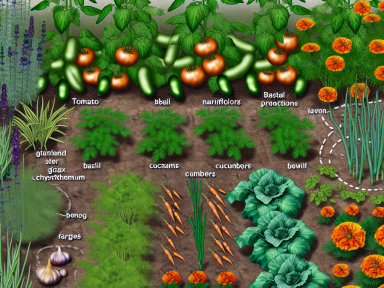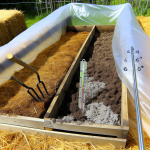What is Companion Planting for Pest Control?
Companion planting is a natural and effective method to keep pests at bay without relying on chemical pesticides. By strategically placing plants that repel pests next to those that are susceptible to them, you create a harmonious garden ecosystem. This technique leverages the aromatic or repellant properties of certain plants to protect their neighbors.
Key Plants That Repel Common Pests
Below is a list of some key plants known for their pest-repellent properties and the pests they deter:
- Marigolds: These bright flowers are excellent at repelling nematodes and whiteflies. Plant them around tomatoes and beans.
- Basil: Known to ward off flies and mosquitoes, basil also enhances the growth and flavor of tomatoes.
- Lavender: With its aromatic leaves, lavender repels moths, fleas, and ticks. Lavender is a great companion for cabbages.
- Garlic: An all-round pest deterrent, garlic repels a variety of pests including aphids and Japanese beetles. Plant it among roses for a dual benefit.
- Chrysanthemums: These flowers contain pyrethrin, which is a natural insecticide. They help to deter spider mites, ticks, and cockroaches.
Specific Companion Planting Combinations
Tomatoes and Basil
Planting basil alongside tomatoes not only keeps away pests like aphids and whiteflies but also improves the flavor and growth of the tomatoes. For best results, plant basil at the base of each tomato plant.
Cucumbers and Nasturtiums
Nasturtiums attract aphids, acting as a trap crop that diverts pests away from cucumbers. Plant nasturtiums around the perimeter of your cucumber patch.
Carrots and Onions
Onions repel carrot flies due to their strong scent. Conversely, carrots help to deter onion flies. Plant rows of onions and carrots alternately in the same garden bed.
Practical Tips for Successful Companion Planting
- Understand Plant Compatibility: Not all plants make good neighbors. Research the needs and preferences of different plants before creating your garden layout.
- Rotate Crops Annually: Changing the location of your plants each year can help to prevent pests and diseases from becoming established in the soil.
- Plant in Pairs or Groups: Instead of single plants, grow your companions in pairs or small groups to maximize their protective benefits.
- Use Trap Crops: Incorporate plants that pests are particularly attracted to in order to lure them away from your valuable crops.
- Maintain Plant Health: Healthy plants are naturally more resistant to pests than stressed or weak ones. Ensure your garden receives adequate light, water, and nutrients.
Conclusion
Companion planting is a time-tested, eco-friendly, and effective method for pest control in your garden. By understanding the relationships between plants and insects, you can create a thriving, healthy garden that naturally fends off pests. Start incorporating these tips into your gardening routine today and watch your plants flourish!




GIPHY App Key not set. Please check settings